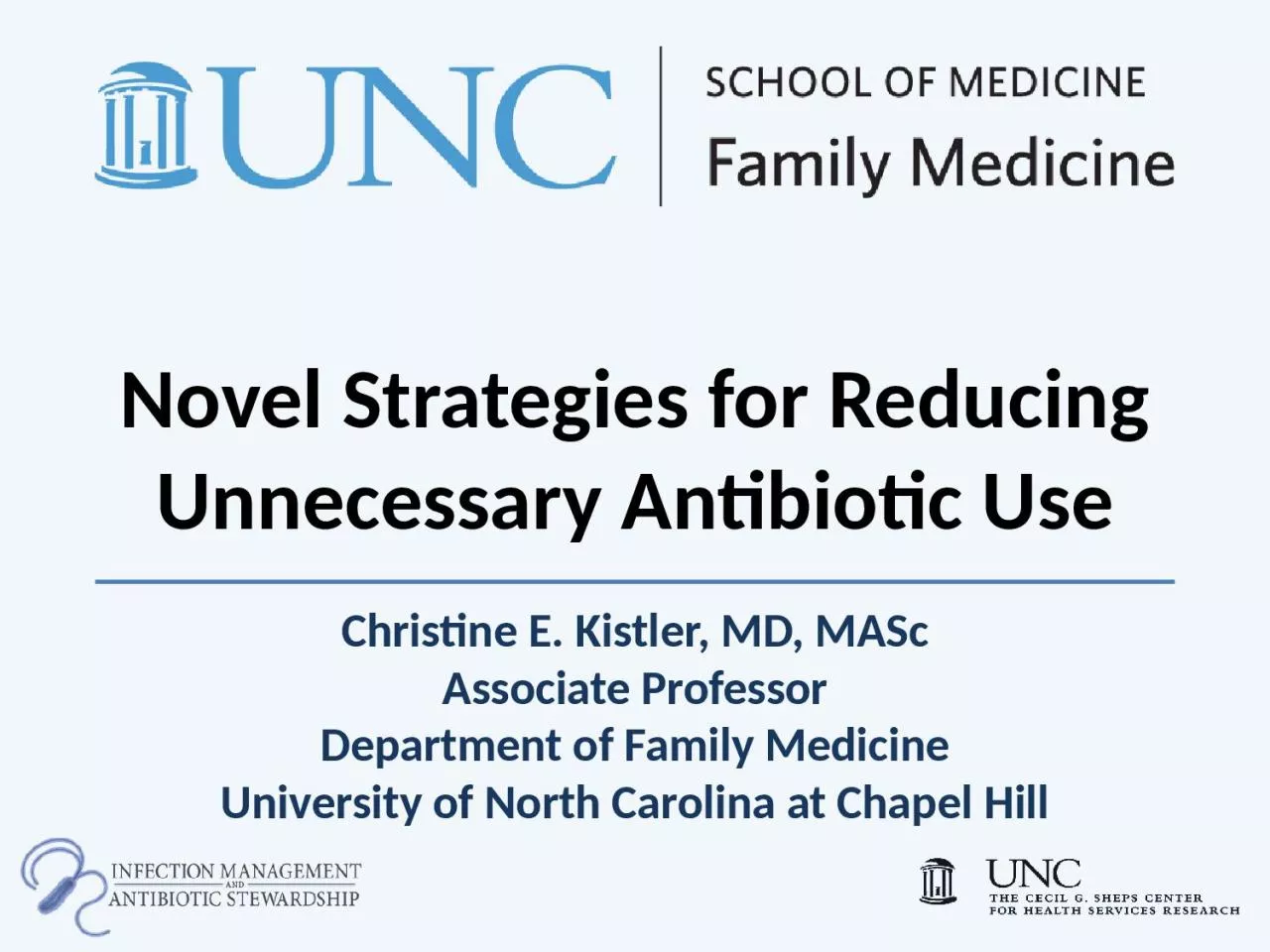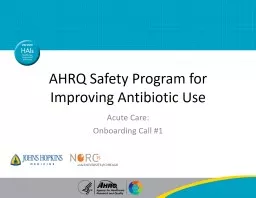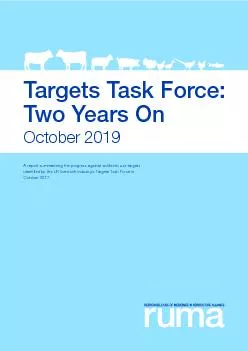PPT-Novel Strategies for Reducing Unnecessary Antibiotic Use
Author : susan | Published Date : 2022-06-08
Christine E Kistler MD MASc Associate Professor Department of Family Medicine University of North Carolina at Chapel Hill Conflicts of Interest I have no financial
Presentation Embed Code
Download Presentation
Download Presentation The PPT/PDF document "Novel Strategies for Reducing Unnecessar..." is the property of its rightful owner. Permission is granted to download and print the materials on this website for personal, non-commercial use only, and to display it on your personal computer provided you do not modify the materials and that you retain all copyright notices contained in the materials. By downloading content from our website, you accept the terms of this agreement.
Novel Strategies for Reducing Unnecessary Antibiotic Use: Transcript
Christine E Kistler MD MASc Associate Professor Department of Family Medicine University of North Carolina at Chapel Hill Conflicts of Interest I have no financial conflicts of interest to disclose . Name. Organization. Date. Overview. Discuss antibiotic resistance in the United States . Summarize recent national policy developments. Describe . the Get Smart: Know When Antibiotics Work program. Discuss factors . Avoid expletive phrases.. It is, There is, There are, . . . Avoid unnecessary articles (a, an, the ).. She hated to wash [the] dishes.. Collapse unnecessary prepositional phrases.. She lived in the house on the corner. . . usage. . and. . resistance. . unavoidable. link?. Evelina Tacconelli. Comprehensive. Center . for. . Infectious. . Diseases. DZIF Partner Center . Tübingen University. Germany. Antimicrobial Resistance: How to Foster Innovation, Access . Health Plans Address the Challenge of. Antibiotic Resistance. Robert Scalettar, M.D.. July 19, 2005. An Introduction to CAQH. The Council for Affordable Quality Healthcare (CAQH) is a not-for-profit alliance of health plans and networks that promotes collaborative initiatives to:. Stewardship:. Implementing . Antibiotic Stewardship Into Your Outpatient Practice. Office of Antibiotic Stewardship. Division of Healthcare Quality Promotion. National Center for Emerging and Zoonotic Infectious Diseases. Presented By . Dr.Qurat-Ul-Ain. . Antibiotic Susceptibility:. Antibiotic sensitivity test . (AST) . is a laboratory method for determining the susceptibility of organisms to therapy with antibiotics.. Lab activity in preparation for practical exam. AS level biology. Food Tests. Food Tests. What is Benedict's Test for Reducing Sugars?. What are reducing sugars?. Reducing sugars. What is the procedure for the Benedict's Test for reducing sugars?. July 22. nd. , 2015 Football Meeting. 2015 FOOTBALL. RULE CHANGES. Unnessary. roughness. (. 9-4-3g). No player or . nonplayer. shall make any other contact with an opponent, including a defenseless player, which is deemed unnecessary or excessive and which incites roughness.. Principles of Antimicrobial Stewardship. Jacob M . Kesner. , . PharmD. UNMH PGY-2 Infectious Diseases Resident. NMPhA. 88th Annual Convention. June 24. th. , 2017. Conflicts of Interest Disclosure Statement. Overview. Discuss antibiotic resistance in the United States . Summarize recent national policy developments. Describe . the Get Smart: Know When Antibiotics Work program. Discuss perceptions/misperceptions contributing to . Robin Oliver, M.D., CPE. Antibiotic Stewardship. Antibiotic Stewardship. : . the effort to measure and improve how antibiotics are prescribed by clinicians and used by . patients. Improving . antibiotic prescribing involves . Acute Care: . Onboarding Call #1 . Presenter: . Sara Cosgrove. Sara Cosgrove, . MD, MS. Title: Professor of Medicine, Division of Infectious Diseases, Director, Antimicrobial Stewardship Program, Associate Hospital Epidemiologist. . SYFTET. Göteborgs universitet ska skapa en modern, lättanvänd och . effektiv webbmiljö med fokus på användarnas förväntningar.. 1. ETT UNIVERSITET – EN GEMENSAM WEBB. Innehåll som är intressant för de prioriterade målgrupperna samlas på ett ställe till exempel:. 2 ForewordIntroductionThe Big PictureVaccine uptakeHealth and welfare metricsFish sector: troutOverview - troutVaccinationVaccination26 Gamebird sectorAppendix 1: Cross-sector campaignsAppendix 2: App
Download Document
Here is the link to download the presentation.
"Novel Strategies for Reducing Unnecessary Antibiotic Use"The content belongs to its owner. You may download and print it for personal use, without modification, and keep all copyright notices. By downloading, you agree to these terms.
Related Documents














